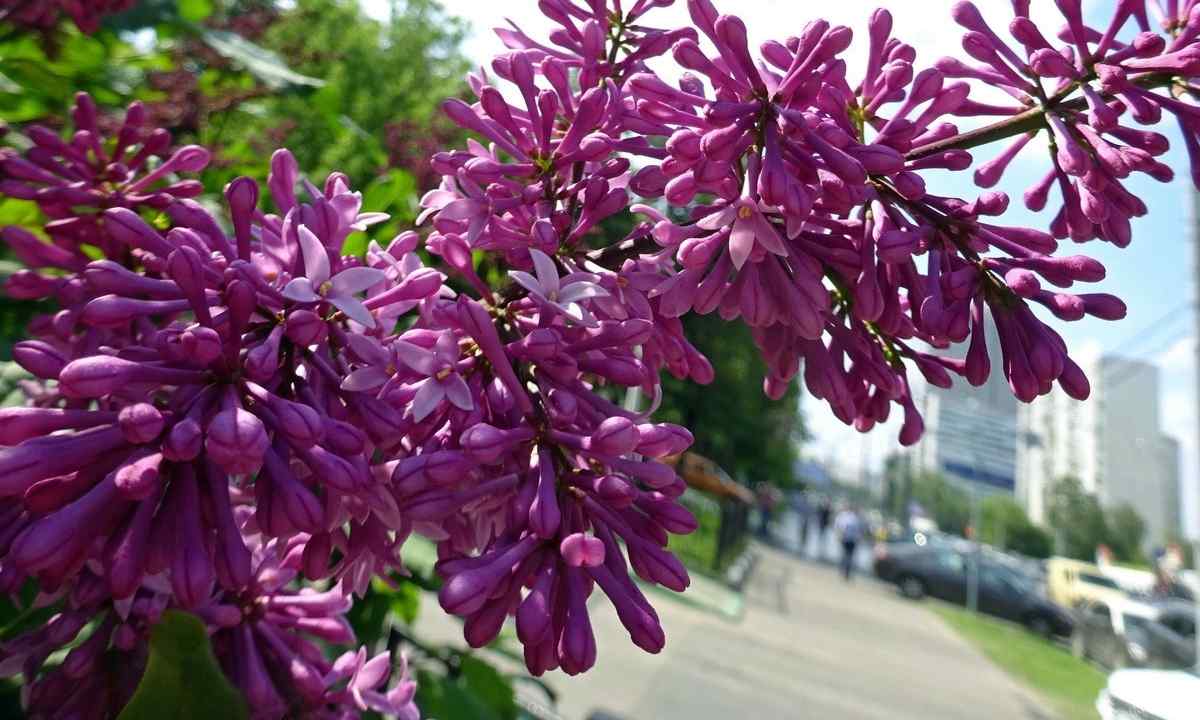The Hungarian lilac – the compact, not too sprawling bush perfectly suitable for park gardening and cultivation on personal plots. The plant is undemanding, but on solar and fertile sites the blossoming will be especially abundant.
Hungarian lilac: description and origin
The Hungarian lilac (syringa josikaea) is widespread in the European countries. In wild-growing look it meets in the Carpathians and in the north of the Balkan Peninsula. The plant was practically not exposed to selection work therefore cannot brag of variety of grades. In gardens and parks land that wild lilac – the unpretentious, resistant to frosts, quietly transferring shortage of moisture.
Bush of the average size, the most compact representative of family with the strong, not hanging branches. Seldom higher than 3 m grow. Diameter of krone rather narrow, plant looks graceful and well looks even on very small sites. Leaves heart-shaped or oval, dark green, slightly concave, with dense glossy surface. Important feature - the trimmed reverse side of leaf. Well oblistvenny bush keeps decorative effect and after blossoming, the krone does not thin and does not need forming. Powerful, capable roots to absorb moisture from deep soil layers. In the spring on bush there are young violet-purple escapes giving to plant elegant look.
Flowers are collected in small, but abundant openwork brushes. Single, tubular buds. Color of lobes saturated, lilac-lilac, not revealed buds more dark. The lilac differs in very saturated, but delicate aroma. Brushes are dismissed at the end of May, blossoming continues to half of June. There are grades with buds of different shades including two-color.
Landing and cultivation
The lilac Hungarian differs from other grades in indiscriminateness and low sensitivity to air pollution. Effective bushes with dark green leaves perfectly are suitable for city gardening, without demanding daily laborious care. Low bushes are widely used in landscaping for registration of beds and mikroborder, from them create dense green hedges. The plant has deserved positive reviews from the amateur gardeners noting his indiscriminateness and durability.
As well as other types of lilac, the Hungarian version it is sensitive to light. The best place for landing – the flat, well lit site without highly lying underground waters. The bush well feels on the bright or scattered sun, but is reconciled also with half-shade. The Hungarian is not exacting to structure of the soil, but on fertile sites the blossoming will be more magnificent.
Reproduction is carried out by shanks. They are landed in the fall or at the end of summer, spring landing slows down development of bush. If necessary the plant can be moved on the new place even at adult age. For improvement of survival to the soil introduce complex mineral fertilizer or organic chemistry. It is necessary to water bushes in process of drying of the soil.
Important point of leaving – cutting. Right after blossoming the faded whisks cut off, it stimulates abundant setting of buds next year. In the spring the bush is slightly thinned out, without allowing thickening, delete the dried and damaged escapes. If desired the art hairstyle is possible, the Hungarian lilac perfectly transfers forming of krone and does not stop blossoming.

